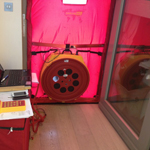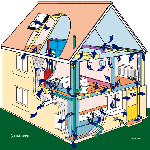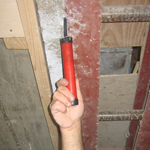Airtightness in retrofit webinar




Upto a third of energy in a home can be lost through draughts. Also, where air moves through a house, it takes moisture laden air with it which can cause interstitial condensation and mould.
Airtightness in retrofit is important for avoiding heat loss as it means less air leakage or draughts.
If designed well, homes retrofitted to be airtight are warmer, more comfortable and free from both draughts and condensation. They are also future-proofed against the extreme weather events promised by climate change. Airtightess can improve health by preventing substances that can provoke allergies being carried into the building via air leakage. It can also result in better sound insulation within the home.
The webinar by Paul Jennings of Aldas looks at addressing airtightness in retrofit. The webinar was recorded as part of Eco Open Houses Online.
The webinar is two short films below:
- Talk where Paul discusses airtightness
- Question and answer session.
Airtightness in retrofit outline:
- Air leakage
- Importance of airtightness
- Outline of an airtightness test
- 12 steps to airtightness
- Common defects
Airtightness in retrofit webinar Q&A
Some of the questions asked included:
- What is a good airtightness strategy for a 'typical' Brighton Victorian terraced house?
- What role does our dehumidifier have to play in things?
- what readily available airtighness tape do you recommend as being good?
Airtightness in retrofit speaker biography:
Paul Jennings of Aldas is the most experienced airtightness tester and consultant in the UK, with over 30 years’ experience. He is a member of the Association of Environment Conscious Building (AECB) for over 15 years and a Trustee for much of that time. He is also a Director of the UK Cohousing Network.
Paul is an experienced trainer and originated the “Airtightness Champion” concept, as well delivering numerous on-site trainings and many CPD seminars to architects and builders. He developed the "12 Steps to Airtightness" approach to enable UK contractors to reliably deliver airtightness in Passivhaus and other low-energy projects. Paul has been involved in most of the PassivHaus projects in the UK one or more capacities.





